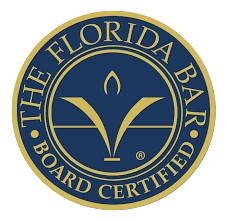This week is National Child Passenger Safety Week, which culminates on Saturday, September 21, with National Seat Check Day. At the personal injury law firm of Rader Law Group, we recognize the importance of child safety in automobiles. Car crashes are the leading cause of death for children ages 1 to 13. The sad reality is, many of these deaths are avoidable and preventable.
Florida law requires any child under the age of 5 who is being transported in a motor vehicle to be secured in a crash-tested and federally approved child restraint device. See: Florida Statute 316.613. However, this is a bare minimum standard and relies upon age, rather than weight, height and size. In fact, the American Academy of Pediatricians suggests that children should be in a booster seat that properly positions the seatbelt until the vehicle’s lap and shoulder belts fit properly. This is usually when the child reaches the height of 4 feet, 9 inches and are typically between the ages of 8 and 12. Additionally, the AAP recommends that children be properly restrained in the rear of the vehicle until they have reached the age of 13.
Following these guidelines and properly installing a child safety car seat can greatly reduce the risk to a child being injured or killed in a car crash. The AAP cited a study showing that up to 70 % of all serious injuries and fatalities suffered by children in car crashes could be avoided by properly installing and using an approved child restraint system. Additionally, parents and drivers of children should consider the following:
Ask your pediatrician whether your child is ready to move to the next stage of car seats, or out of a safety seat altogether, before making that decision on your own.
Register your purchased car seat with the manufacturer and be on the lookout for any potential recalls by checking the National Highway Traffic Safety Administration (NHTSA) website.
Do not use old or worn-down safety seats and do not accept hand me downs from friends and relatives. If possible, purchase new car seats. Safety standards and guidelines change frequently. What was good two years ago, may not be suitable any longer.
Make sure the safety seat is installed properly and check it often. Follow the manufacturers instructions carefully. If you have questions or concerns, contact the manufacturer. Many local cities and counties also offer services through the local fire rescue departments where they will install and inspect car seats for free or a minimal donation.
If you happen to be involved in a car crash, after making sure that everyone is alright, the NHTSA does recommend that you replace the children’s car seat. At a minimum, carefully inspect the car seat, check its installation and integrity.
If you have any questions or concerns on child safety in car seats, please contact the personal injury attorneys at Rader Law Group today. Our injury attorneys have been representing victims of car crashes for more than 70 combined years of practice. We offer free consultations and work on a contingency fee (no fee unless we recover) only.









